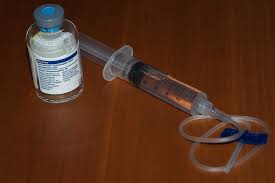Abstract
National AIDS surveillance suggests that approximately 3.5% of all hemophilic patients in the United States have developed AIDS as of February 1988; however, the cumulative incidence of AIDS among seropositive patients at individual hemophilia treatment centers (HTCs) has been reported to be as high as 12%. The purpose of this study was to examine the reported excess risk of AIDS at selected HTCs. Between July 13 and November 6, 1987, we reviewed medical charts from the 598 hemophilia A and hemophilia B patients receiving comprehensive care as of 1980 at six U.S. hemophilia treatment centers (three identified as low AIDS risk and three identified as high AIDS risk using national hemophilia-associated AIDS surveillance data). The risk of AIDS among all patients was 8% and among seropositive patients was 18%. At the individual HTCs, the risk ranged from 0% to 14% among all patients and 0% to 25% among seropositive patients. Overall incidence rates were higher than those derived from national surveillance data because national estimates include all hemophilic patients (regardless of severity) whereas this study included only patients receiving comprehensive care (who are more likely to be severely affected by their coagulation disorder and receive concentrated clotting factors).
The higher incidence of AIDS in the high-risk centers was attributable to the older age of the patients in these HTCs, a factor previously associated with an increased risk of AIDS in seropositive patients. These findings do not support geographic variability in the incidence of AIDS and emphasize the importance of patient characteristics when comparing the incidence of hemophilia-associated AIDS between populations.
Stehr-Green JK, Jason JM, Evatt BL
Am. J. Hematol. 1989 Nov;32(3):178-83
PMID: 2816910
Stehr-Green-1989-AJ-Hem-aids-geography